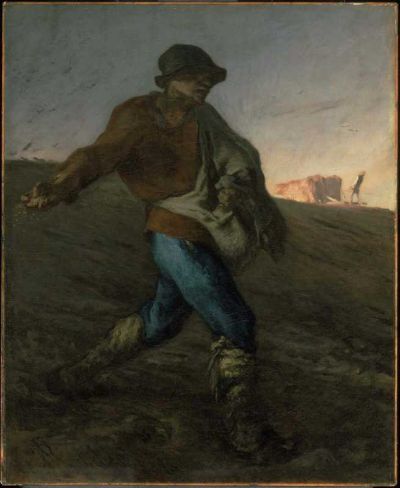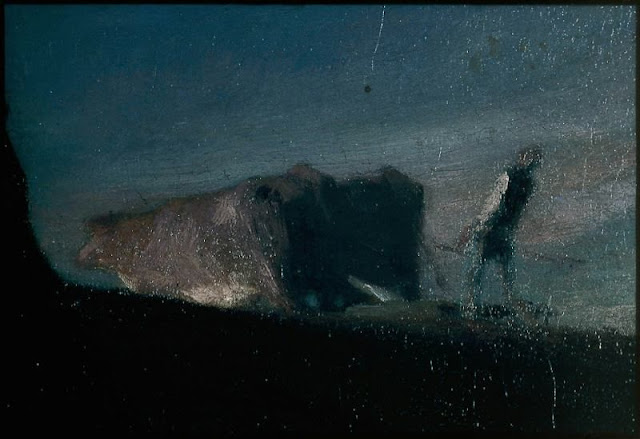

 Jean-François Millet, 1814–1875
Jean-François Millet, 1814–1875The Sower 1850
101.6 x 82.6 cm (40 x 32 1/2 in.)
Oil on canvas
The Museum of Fine Arts, Boston
The Forest of Fontainebleau, some thirty-five miles southeast of Paris, is where French landscape painting and photography took root.
The forest was regarded as an example of nature in its purest state.
A portion of the forest was set aside in 1861 as the first nature preserve in history.
During the 1820s and 1830s, painters such as Jean-Baptiste-Camille Corot and Théodore Rousseau helped to transform the nearby villages of Barbizon and Chailly into informal artists’ colonies and the forest into an open-air studio.
An outbreak of cholera in Paris prompted Millet in 1849 to join his new friends at Barbizon. From this time on, he devoted himself mainly to subjects from rural life.
Millet and his family lived as frugally as their neighbours. In 1863 his second wife, Catherine gave birth to their ninth child.
Unlike his fellow painters at Barbizon, he did not respond to the forests and rocky deserts of Fontainebleau, preferring man-made agricultural landscapes. After the move to Barbizon, images informed by Millet’s childhood memories of farming life in Normandy were re-interpreted through the experience of his new environs.
The experience of the peasantry around Barbizon was harsh. "Barbizon in 1849 was not exactly a respite from conflict… The peasants [there] hung on to existence." See T.J. Clark, The Absolute Bourgeois, Artists and Politics in France 1848-1851 (London: Thames and Hudson, 1973), 79.
He died on 20 January 1875 and was buried in the churchyard at Barbizon, beside Théodore Rousseau.
In the 1860s a new generation of artists that included Claude Monet, Alfred Sisley, and Auguste Renoir discovered Fontainebleau

No comments:
Post a Comment